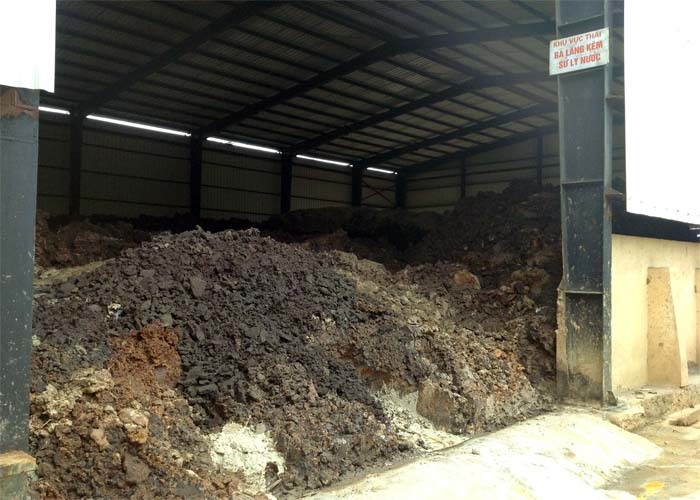Producing non-ferrous metal is one of the major industries in Vietnam which continuously sees high growth rate in recent years. However, the more the production develops, the higher amount of zinc electrolyte wastes it generates, thus putting pressure on the environment.

Thai Nguyen zinc factory is storing about 500 tons of precipitated waste. The analysis showed that the zinc electrolyte industrial wastes (or copper residue) contain heavy metals including copper (26 percent), iron (25 percent), and cadmium (11 percent).
With such a big amount of heavy metal, the waste needs to be treated thoroughly to minimize negative impact on the environment.
| This method not only produces copper sulfate - a valuable and widely used product in many fields, but also helps to effectively handle hazardous industrial waste containing cadmium. |
However, because the copper volume in the waste is relatively high which accounts for ¼ of waste, the zinc electrolyte industrial waste are still considered a source of materials with high economic value.
It is estimated that 125 tons of copper can be recalled from the waste from the Thai Nguyen Zinc Plant. If Vietnam can find a solution to recall the copper, this will be an abundant source of materials for recycling.
Meanwhile, the currently applied measures have many weak points. They consume high amounts of chemicals and time, while they allow to recall 80-85 percent of metal only under the form of solution.
To solve this problem, a group of scientists from the Institute of Materials Sciences headed by Dr Pham Duc Thang carried out reserach and found a new method which allows to recall copper from zinc electrolyte industrial wastes.
By converting copper powder in zinc electrolytic industrial waste into atacamite at ambient pressure and temperature and dissolving them in sulfuric acid solution, more than 90 percent of copper can be recalled under the form of primary copper sulfate solution.
The remaining copper (less than 10 percent) in the residue will be sent for re-selection to recall the remaining copper compounds.
The precipitate has a small particle size, so there is no need to grind further, but it can be directly used for metabolism. Iron is directly reduced in the transformation process without having to add chemicals and without having to carry out a separate step for iron reduction.
The reduction of cadmium is carried out simply in the primary copper sulfate solution obtained, allowing to minimize cadmium volume, while ensuring that the remaining cadmium ions in the solution won’t be precipitated together with copper powder.
This method not only produces copper sulfate - a valuable and widely used product in many fields, but also helps to effectively handle hazardous industrial waste containing cadmium.
Kha Phan

Scientists create slippery toilet coating that stops poo sticking
Scientists say ultra-slippery toilet coating could save a huge amount of water across the planet.

How many Vietnamese are on the lists of the world's leading scientists?
Statistics vary about the number of Vietnamese scientists internationally recognized for excellence.
 The invention by the scientists from the Institute of Materials Science, belonging to the Vietnam Academy of Science and Technology, can help recover more than 90 percent of copper from zinc electrolyte wastes.
The invention by the scientists from the Institute of Materials Science, belonging to the Vietnam Academy of Science and Technology, can help recover more than 90 percent of copper from zinc electrolyte wastes.